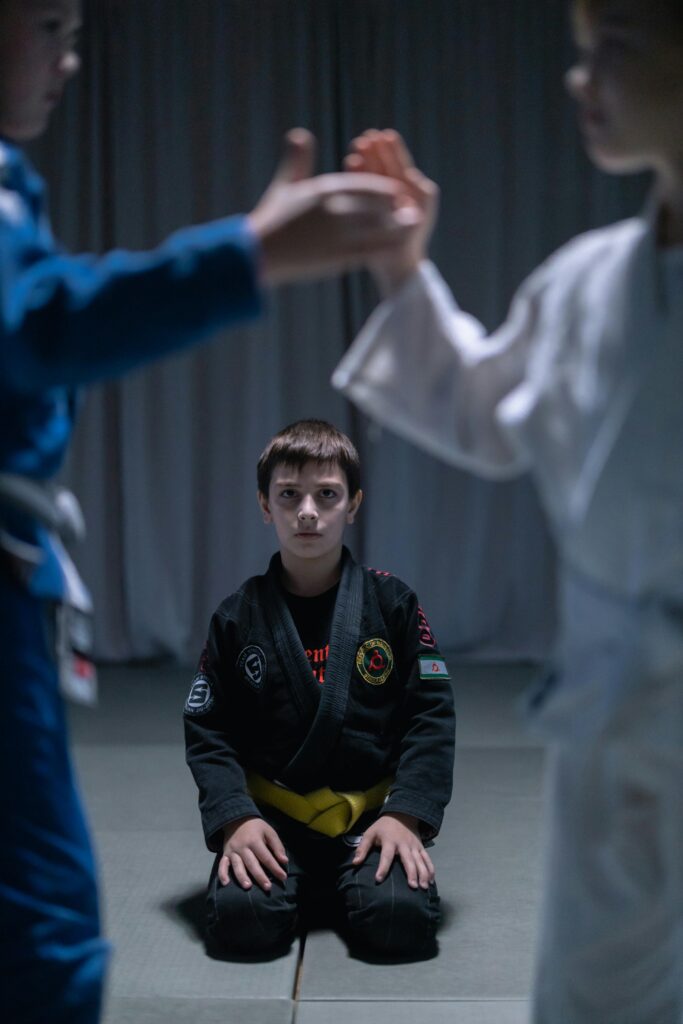A home invasion is one of the most terrifying things to imagine—an intruder entering your space and threatening your family.
But the truth is, knowing how to defend yourself from a home invasion can help you feel prepared and in control, even in high-stress moments. It’s not about living in fear but being ready to protect your loved ones.
Eye2Eye Combat specializes in teaching practical techniques that build confidence and empower families to handle real-world threats. With a few proactive steps and the right mindset, you can create a safer home for those who matter most.
Understanding the Threat of Home Invasions
Home invasions are terrifying because they directly target occupied homes, often with harmful intentions. These situations can escalate quickly, making it crucial to understand what they involve and how to prepare.
What is a Home Invasion?
A home invasion occurs when someone enters your home without permission, intending to harm, intimidate, or steal.
Unlike burglaries, where intruders aim to avoid contact, home invasions put you and your family at direct risk. The intent is often personal, making it more dangerous than other crimes.
Risk Factors to Consider
Certain factors make homes more appealing to intruders. Poor outdoor lighting, unlocked doors, or easily accessible windows can create opportunities.
A predictable schedule can also make it easier for someone to plan an invasion. Even in safe neighborhoods, assuming it “won’t happen here” can lead to vulnerabilities.
Emotional and Psychological Impact
A home invasion leaves more than physical scars. The trauma disrupts the sense of safety that a home provides. Fear and anxiety can linger for months, impacting sleep, daily routines, and overall well-being.
This is why preparation is so vital—it helps restore control over your environment.
Preparing Your Home for Safety
Taking steps to secure your home not only prevents invasions but also gives you peace of mind. These measures are simple but highly effective in creating a safer environment.
Securing Entry Points
Intruders often target entry points like doors and windows. To reinforce these areas:
- Install strong deadbolt locks and reinforce door frames to withstand force.
- Apply security film to windows or use bars to prevent easy access.
- Add peepholes or video doorbells so you can check who’s outside before opening the door.
Using Smart Security Systems
Modern security tools like motion sensors, alarms, and cameras are affordable and effective. These systems alert you to suspicious activity and deter intruders before they act.
Many also allow remote monitoring, so you can check your home from anywhere.
Creating a Safe Room
Having a designated safe room can be a lifesaver. Choose an interior room with a sturdy lock, preferably one without windows.
Stock it with essentials such as a phone to call for help, a flashlight, basic first aid supplies, and water to stay hydrated in emergencies.
Building a Family Safety Plan
A clear, practiced plan ensures everyone in your home knows how to respond. Go over escape routes and rehearse drills with your family. Calm communication is essential, and everyone should know how to call emergency services quickly.
Essential Self-Defense Techniques
Self-defense is about empowerment and preparation. Learning simple yet effective techniques ensures you’re ready to act if necessary.
Start with De-Escalation
Remaining calm in the face of danger can make a big difference. Use a steady, non-threatening tone and avoid sudden movements that might provoke the intruder. Cooperation can sometimes defuse the situation, buying time to call for help or escape.
Practical Defense Moves
If de-escalation fails, basic defense moves can protect you. Focus on:
- Striking weak points like the eyes, throat, or groin to disable the attacker.
- Grabbing nearby items such as a heavy book, lamp, or umbrella to use as a weapon.
- Creating an opening to escape by keeping movements deliberate and targeted.
Training for Real-Life Scenarios
Self-defense classes are incredibly helpful for building skills and confidence. These classes teach you how to react under pressure and adapt techniques to your strengths.
Family training is especially valuable, ensuring everyone knows their role in a crisis and can support one another effectively.
Understanding When to Act
Physical defense should always be a last resort. If you or your family are in immediate danger and there’s no way to escape, acting decisively is your best option. Knowing how and when to act can make a critical difference.
Building Awareness and Preventing Intrusions
Being aware of your surroundings and maintaining proactive habits can significantly reduce the chances of a home invasion.
You don’t have to live in fear; it’s about staying mindful and prepared. Small changes in how you approach daily life can make all the difference.
Spotting Suspicious Behavior
Keep an eye out for anything unusual around your home. If you notice unfamiliar vehicles parked nearby for extended periods or strangers knocking on doors without a clear purpose, these could be early warning signs.
Loitering near your property is another red flag. Pay attention to these behaviors and trust your instincts—if something feels off, it probably is. Don’t hesitate to notify your neighbors or local authorities if you’re concerned.
Adopting Secure Habits
Simple habits are powerful in keeping your home safe.
- Always lock doors and windows, even when you’re at home. It’s easy to forget, but leaving just one entry point unsecured can invite trouble.
- Avoid sharing schedules or travel plans online. Oversharing on social media can make it easier for intruders to know when you’re not home.
- Use timers for lights to create the appearance of activity. This small step can make your house seem occupied, even when you’re away.
Strengthening Community Ties
A strong neighborhood is one of the best defenses against home invasions. Regularly talk with your neighbors, and consider forming or joining a neighborhood watch.
When everyone looks out for one another, it becomes much harder for intruders to target homes unnoticed. Simple things, like sharing tips or keeping an eye on each other’s properties, help create a safer, more connected community.
Aftermath and Recovery
A home invasion can be overwhelming, but how you respond afterward is just as important as your preparation. Acting quickly and focusing on recovery helps your family regain a sense of safety and normalcy.
Focus on Immediate Safety
Once the situation is under control, take a moment to ensure everyone is safe. Check for injuries, even minor ones, and secure your home by locking all doors and windows.
Immediately call emergency services to report the incident and follow their instructions. They can guide you on the next steps to ensure your family’s safety.
Documenting the Incident
Thorough documentation helps law enforcement and supports any insurance claims. Take clear photos of damage to your home or property.
Write down everything you remember about the intruder, including physical description and behavior. Details like these can be crucial in investigations and later claims processes.
Supporting Emotional Recovery
It’s natural to feel shaken after a home invasion. You might notice lingering fear or anxiety, especially in children or more vulnerable family members.
Seeking counseling or therapy can help everyone process the experience and move forward. Support from your community or local organizations can also ease the emotional burden and rebuild your family’s sense of security.
Bring Expert Safety Training Right to Your Door
Your family’s safety depends on the steps you take today. From reinforcing your home to mastering self-defense, preparation gives you the tools and confidence to face high-stress situations.
For those ready to take their readiness further, Eye2Eye Combat offers on-location training tailored to your needs. With professional guidance in the comfort of your space, you’ll learn practical skills designed for real-world scenarios.
Don’t wait—explore our expert training programs and give your family the protection and peace of mind they deserve.
FAQs
What is the best defense for a home invasion?
The best defense starts with preparation. Secure your doors and windows, use a reliable security system, and have a family safety plan in place. Learning self-defense techniques is also crucial in case you need to protect yourself. Confidence and preparation go hand in hand, so training and practicing scenarios can make all the difference in staying safe during an emergency.
How to stop being scared of home invasions?
Fear often comes from feeling unprepared. Start by taking small steps—secure your home, install visible deterrents like cameras, and discuss a safety plan with your family. Learning self-defense or taking a home safety class can boost your confidence. The more prepared you feel, the more that fear transforms into a sense of control and readiness.
How to stop home invasions?
Stopping home invasions involves making your home an unattractive target. Keep entry points secured with strong locks, use outdoor lighting, and install a visible security system. Simple habits like locking doors, even during the day, and getting to know your neighbors can also help. Awareness and proactive measures go a long way in preventing unwanted intrusions.
What is the most common time for home invasions?
Most home invasions happen during the daytime when homes are likely to be empty. Typically, burglars target houses between 10 a.m. and 3 p.m. However, it’s important to stay vigilant at all hours and take precautions to keep your home secure, whether you’re there or not.
What is the main cause of home invasions?
Home invasions often stem from opportunity. Unsecured doors, poor lighting, or the appearance of an unoccupied house can make your home a target. Criminals look for easy entry points or predictable patterns, so breaking these habits and reinforcing your home’s security is key to reducing the risk.
How can self-defense classes help with home invasions?
Self-defense classes prepare you mentally and physically for high-stress situations like home invasions. You’ll learn practical techniques, build confidence, and understand how to act quickly if you’re confronted by an intruder. Beyond physical skills, these classes teach awareness and prevention strategies that help you feel safer and more in control.
What should I do if a home invasion happens while I’m at home?
If you’re home during a break-in, your first priority is to stay safe. Call 911 immediately and, if possible, move to a secure location like a safe room. Stay quiet and avoid confrontation unless it’s absolutely necessary. If an intruder confronts you, remain calm and cooperative to de-escalate the situation. Preparation, such as having a family plan, makes it easier to respond effectively.





